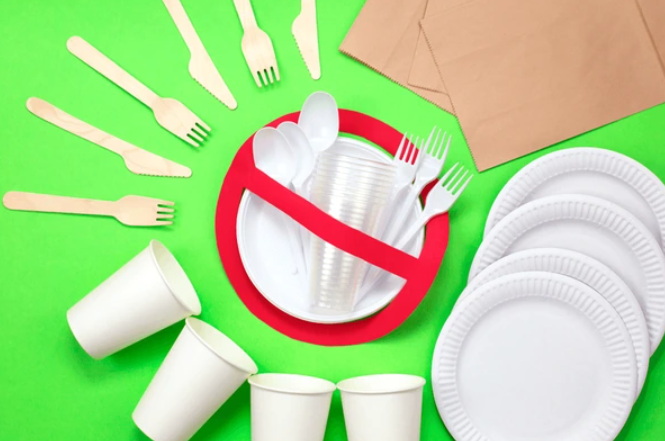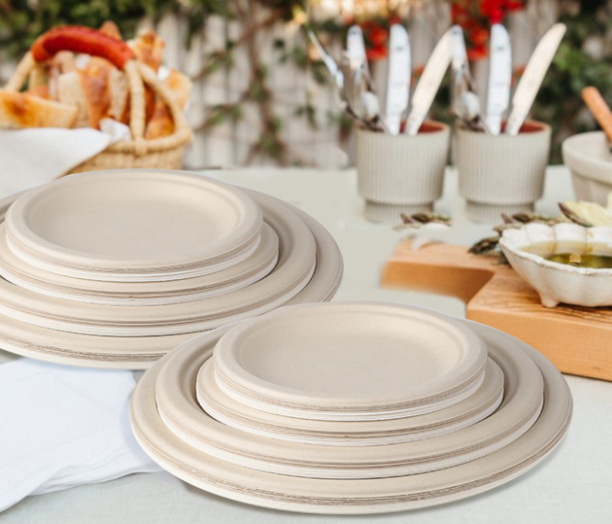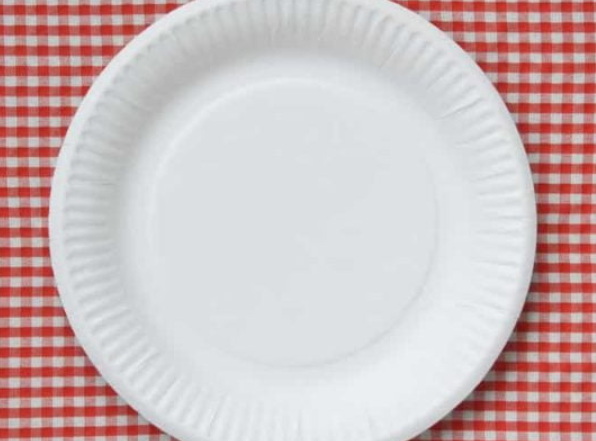
Content Menu
● Introduction to Disposable Plates
>> Types of Disposable Plates
● Reusability of White Disposable Plates with Red Bands
>> How to Reuse White Disposable Plates with Red Bands
>> Safety Considerations
● Environmental Impact
>> Recycling Disposable Plates
>> Environmental Impact of Paper Plates
● Alternatives to Disposable Plates
>> Biodegradable Options
>> Bamboo Plates
● Comparison of Sustainable Options
● Life Cycle Assessment of Tableware
● Conclusion
● Frequently Asked Questions
>> 1. Are White Disposable Plates with Red Bands Recyclable?
>> 2. Can White Disposable Plates with Red Bands Be Microwaved?
>> 3. How Do I Clean White Disposable Plates with Red Bands for Reuse?
>> 4. What Are the Environmental Benefits of Reusing White Disposable Plates with Red Bands?
>> 5. Are There Sustainable Alternatives to White Disposable Plates with Red Bands?
● Citations:
In recent years, the use of disposable tableware has become increasingly popular due to its convenience and ease of cleanup. Among these, white disposable plates with red bands are particularly favored for their stylish appearance and affordability. However, the question remains: Can these plates be reused? This article will delve into the world of disposable plates, exploring their materials, recyclability, and potential for reuse, with a focus on white disposable plates with red bands.

Introduction to Disposable Plates
Disposable plates are made from various materials, including plastic, paper, and biodegradable materials like bamboo or sugarcane. White disposable plates with red bands are typically made of plastic, which is lightweight and durable. These plates are often used at parties, events, and casual gatherings due to their ease of use and disposal.
Types of Disposable Plates
1. Plastic Plates: These are the most common type of disposable plates. They are made from various types of plastic, such as polypropylene (PP) or polystyrene (PS), which can be recyclable under certain conditions. White disposable plates with red bands fall into this category.
2. Paper Plates: These are biodegradable and compostable, making them a more environmentally friendly option. However, they may be coated with wax or plastic, affecting their recyclability.
3. Biodegradable Plates: Made from materials like bamboo or sugarcane, these plates are compostable and offer a sustainable alternative to traditional plastic plates.
Reusability of White Disposable Plates with Red Bands
The reusability of white disposable plates with red bands depends on several factors:
- Material: Since these plates are typically made of plastic, they can be washed and reused if they are not damaged. However, repeated washing may cause them to degrade over time.
- Design and Quality: The durability of the plate and the band's design can affect how well it withstands washing and reuse.
- Safety: If the plates are BPA-free and made from safe materials, they can be used multiple times without posing health risks.
How to Reuse White Disposable Plates with Red Bands
1. Cleaning: Wash the plates with mild soap and water. Avoid using abrasive cleaners or scrubbers that might damage the surface.
2. Drying: Dry the plates thoroughly to prevent water spots and bacterial growth.
3. Storage: Store the plates in a clean, dry place to maintain their condition.
Safety Considerations
When reusing white disposable plates with red bands, ensure they are BPA-free and safe for food contact. Avoid microwaving them unless they are specifically labeled as microwave-safe.

Environmental Impact
While reusing white disposable plates with red bands can reduce waste, it's essential to consider the broader environmental impact of disposable tableware. Plastic plates contribute to pollution and take centuries to decompose if not recycled properly. In contrast, biodegradable options like bamboo or sugarcane plates offer a more sustainable choice.
Recycling Disposable Plates
Recycling plastic plates involves sorting, cleaning, and reprocessing them into new products. This process helps conserve resources and reduce landfill waste. However, many plastic plates are not easily recyclable due to contamination from food waste or the specific types of plastic used[7].
Environmental Impact of Paper Plates
Paper plates, often seen as a greener alternative, also have significant environmental impacts. Their production requires large volumes of water and contributes to deforestation and biodiversity loss[4]. Moreover, many paper plates are coated with wax or plastic, making them non-recyclable and non-compostable[2][4].
Alternatives to Disposable Plates
For those looking to reduce their environmental footprint, reusable plates made from glass, metal, or ceramic are excellent alternatives. These materials are durable and can be used multiple times, significantly reducing waste.
Biodegradable Options
Biodegradable plates, such as those made from palm leaves or sugarcane, are compostable and offer a sustainable option for events where disposable tableware is preferred. These materials break down naturally without leaving harmful residues behind[3][6].
Bamboo Plates
Bamboo plates are another eco-friendly option. Bamboo is the fastest-growing woody plant, making it a highly renewable resource. Bamboo plates are durable, resistant to pests, and require no chemical coatings, making them an excellent choice for those seeking sustainable disposable tableware[3][6].
Comparison of Sustainable Options
| Material | Description | Compostability |
| Bamboo | Fastest-growing woody plant, durable, pest-resistant. | Fully compostable |
| Sugarcane Bagasse | Byproduct of sugar production, biodegradable. | Fully compostable |
| Palm Leaves | Made from naturally fallen leaves, zero-waste production. | Fully compostable |
| Paper | Biodegradable but often coated with wax or plastic. | Varies, generally compostable if uncoated |
Each material offers distinct environmental advantages, including reduced waste and lower greenhouse gas emissions during production[6].
Life Cycle Assessment of Tableware
Life Cycle Assessment (LCA) studies show that reusable porcelain dishes have lower impacts than conventional single-use plastic and paper dishes. However, the manufacturing phase of a plate is responsible for most of its environmental impact[1]. This highlights the importance of choosing sustainable materials and practices throughout the entire life cycle of tableware.
Conclusion
While white disposable plates with red bands can be reused under certain conditions, their environmental impact and safety should be carefully considered. For a more sustainable approach, switching to reusable or biodegradable options can significantly reduce waste and contribute to a healthier planet.

Frequently Asked Questions
1. Are White Disposable Plates with Red Bands Recyclable?
Yes, many plastic plates, including white disposable plates with red bands, are recyclable if they are made from recyclable plastics like polypropylene (PP) or polystyrene (PS). However, they must be sorted and cleaned properly before recycling.
2. Can White Disposable Plates with Red Bands Be Microwaved?
Only if they are specifically labeled as microwave-safe. It's crucial to check for BPA-free certification to ensure safety when heating food in these plates.
3. How Do I Clean White Disposable Plates with Red Bands for Reuse?
Use mild soap and water. Avoid harsh chemicals or abrasive scrubbers that might damage the plates. Dry them thoroughly after washing to prevent bacterial growth.
4. What Are the Environmental Benefits of Reusing White Disposable Plates with Red Bands?
Reusing these plates can reduce the amount of waste sent to landfills. However, for a more significant environmental impact, consider switching to reusable or biodegradable options.
5. Are There Sustainable Alternatives to White Disposable Plates with Red Bands?
Yes, biodegradable plates made from materials like bamboo or sugarcane are excellent alternatives. They are compostable and reduce environmental harm compared to traditional plastic plates.
Citations:
[1] https://anationofmoms.com/2023/11/disposable-tableware.html
[2] https://greencitizen.com/blog/are-paper-plates-recyclable/
[3] https://www.bambuhome.com/blogs/bambuliving/compostable-vs-disposable-plates
[4] https://www.verterra.com/blogs/thedirtydish/paper-plates-versus-palm-plates-a-fight-for-sustainability
[5] https://academy.monouso-direct.com/types-of-plates/
[6] https://diyecobox.com/eco-friendly-alternatives-to-plastic-plates/
[7] https://smartyhadaparty.com/blogs/home/plastic-vs-paper-plates-which-is-better
[8] https://www.treehugger.com/recycle-paper-plate-5200281
[9] https://smartyhadaparty.com/blogs/home/understanding-biodegradable-disposable-dinnerware
[10] https://ssfs.recyclist.co/guide/paper-plates/
[11] https://diyecobox.com/eco-friendly-alternatives-to-plastic-plates-3/
[12] https://www.mdpi.com/2071-1050/17/4/1434
[13] https://www.youtube.com/watch?v=bj0U-6SczZI
[14] https://foogogreen.com/blog/ecofriendly-alternatives-for-paper-plates/
[15] https://www.eastwenatcheewa.gov/338/Recycling-Solid-Waste
[16] https://www.linkedin.com/advice/0/what-some-eco-friendly-alternatives-disposable-plates
[17] https://sanjoserecycles.org/guide/plastic-plates/
[18] https://www.anchenggy.com/blog/best-disposable-plastic-cutlery-alternatives.html
[19] https://www.sustainability.vic.gov.au/circular-economy-and-recycling/at-home/avoid-waste/minimise-single-use-items/disposable-dinnerware
[20] https://www.freshtableware.in/post/which-biodegradable-plates-and-cutleries-are-the-best-substitutes-of-the-plastic-ones

















